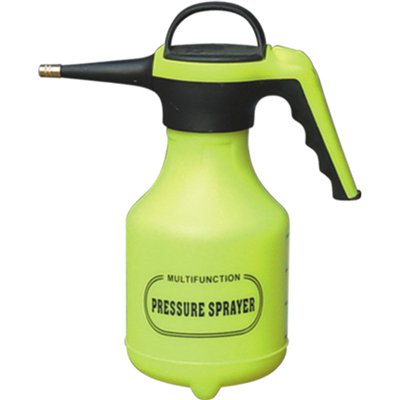The battery sprayer is a portable and convenient device used for spraying liquids, such as pesticides, herbicides, fertilizers, or cleaning solutions. It operates on a simple yet effective principle to deliver the desired liquid evenly and efficiently. The structure and working principle of a battery sprayer can be broken down into several key components:
The tank is the main reservoir that holds the liquid to be sprayed. It is typically made of durable and chemical-resistant materials, such as high-density polyethylene (HDPE). The tank's capacity can vary depending on the model, ranging from a few liters to several gallons.
The battery sprayer is powered by a rechargeable battery, usually a lithium-ion or lead-acid battery. The battery provides the necessary electrical energy to drive the motor. The motor is an essential component responsible for creating the pressure required to spray the liquid. It may be an electric motor or a pump that is powered by a battery.
The pump is the heart of the battery sprayer, responsible for pressurizing the liquid inside the tank. When the motor is activated, it drives the pump to create pressure, forcing the liquid to move through the sprayer's nozzle. The pump may be a diaphragm pump or a piston pump, depending on the design and capacity of the sprayer.
A pressure control system is incorporated into the battery sprayer to regulate the pressure of the liquid being sprayed. It ensures that the desired pressure level is maintained throughout the spraying process, enabling consistent and uniform distribution of the liquid.
The nozzle is the outlet through which the liquid is sprayed. It is usually made of brass, stainless steel, or other corrosion-resistant materials. The nozzle's design and size influence the spray pattern, allowing for different spraying modes, such as a fine mist or a targeted stream.
The wand is an extension attached to the nozzle, allowing the user to direct the spray to specific areas. It provides flexibility and ease of use, especially when treating plants or hard-to-reach spots. The wand is connected to the tank via a hose, which transfers the liquid from the tank to the nozzle.
The working principle of a battery sprayer revolves around creating pressure inside the tank to force the liquid out through the nozzle. Here's a step-by-step explanation of how it works:
The first step is to fill the tank with the desired liquid, such as pesticides or fertilizers. The tank is then securely sealed to prevent any leaks.
When the user activates the power switch, the battery supplies electrical energy to the motor, starting its operation.
The motor drives the pump, creating a vacuum inside the pump chamber. This vacuum draws the liquid from the tank through an inlet valve.
As the pump's diaphragm or piston moves, it compresses the liquid inside the pump chamber. This compression builds up pressure within the tank.
The pressure control system monitors the pressure level and maintains it within the desired range, ensuring a steady flow of liquid.
When the user presses the trigger on the wand, the pressurized liquid is forced out through the hose and nozzle, creating a spray. The user can control the spray pattern and intensity by adjusting the nozzle's settings.
As long as the power switch is on and the trigger is pressed, the battery sprayer will continue to spray the liquid. The battery's capacity determines the operational time of the sprayer before it needs recharging.
The battery sprayer's structure and working principle involve a combination of key components, such as the tank, battery, motor, pump, pressure control system, nozzle, wand, and hose. This simple yet effective design allows users to spray liquids evenly and efficiently, making it a versatile and convenient tool for various applications, including gardening, agriculture, pest control, and cleaning tasks.










